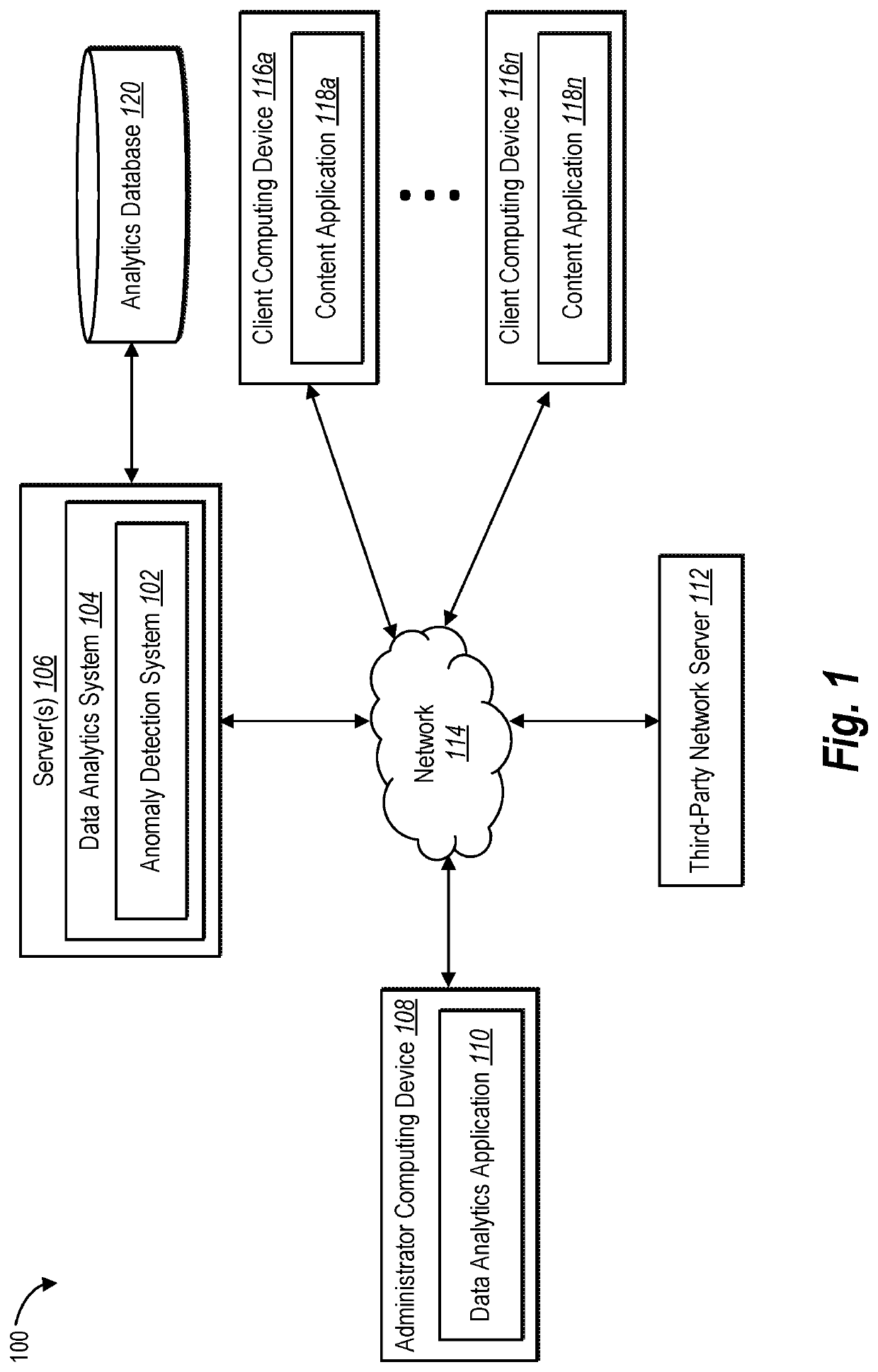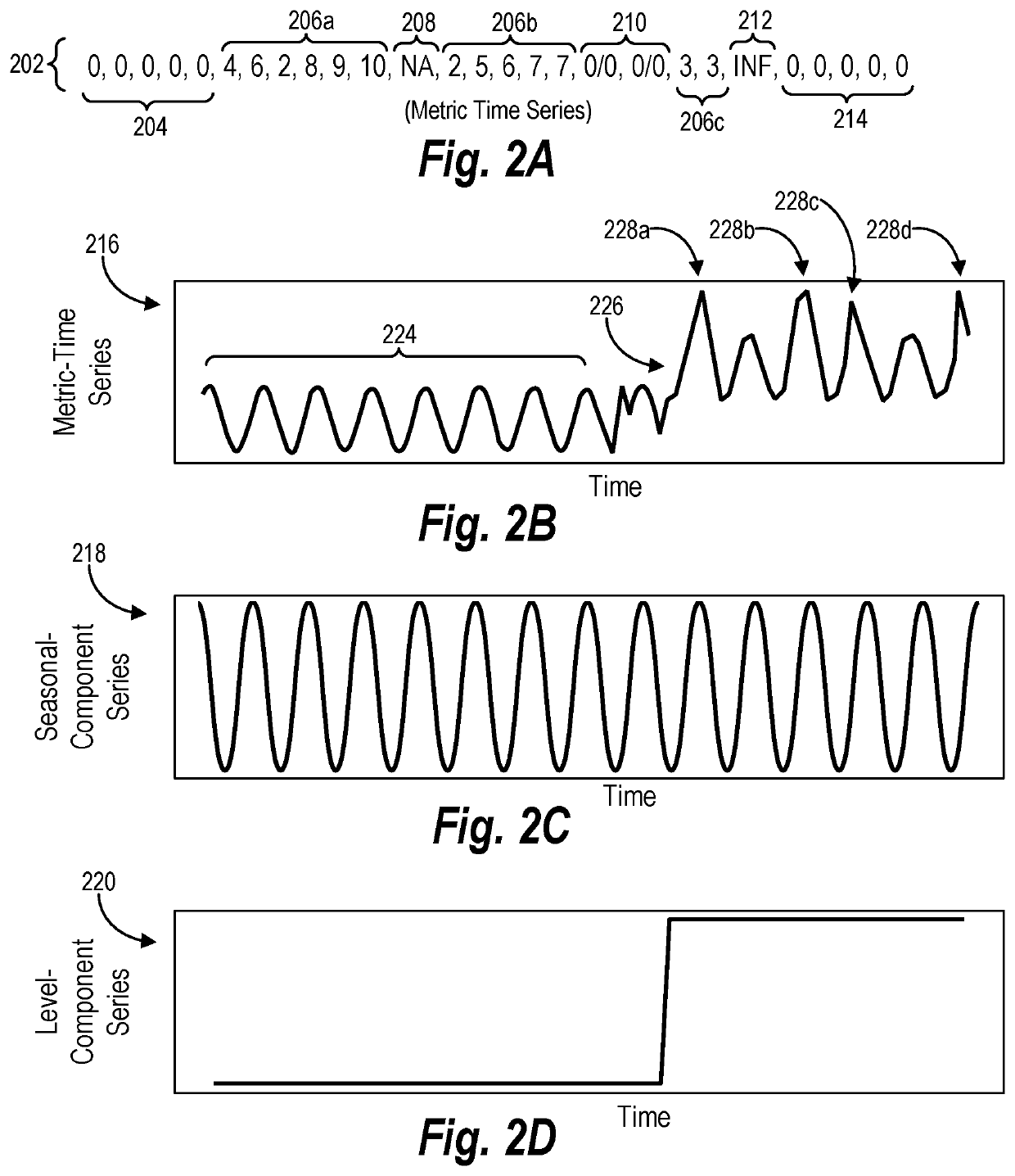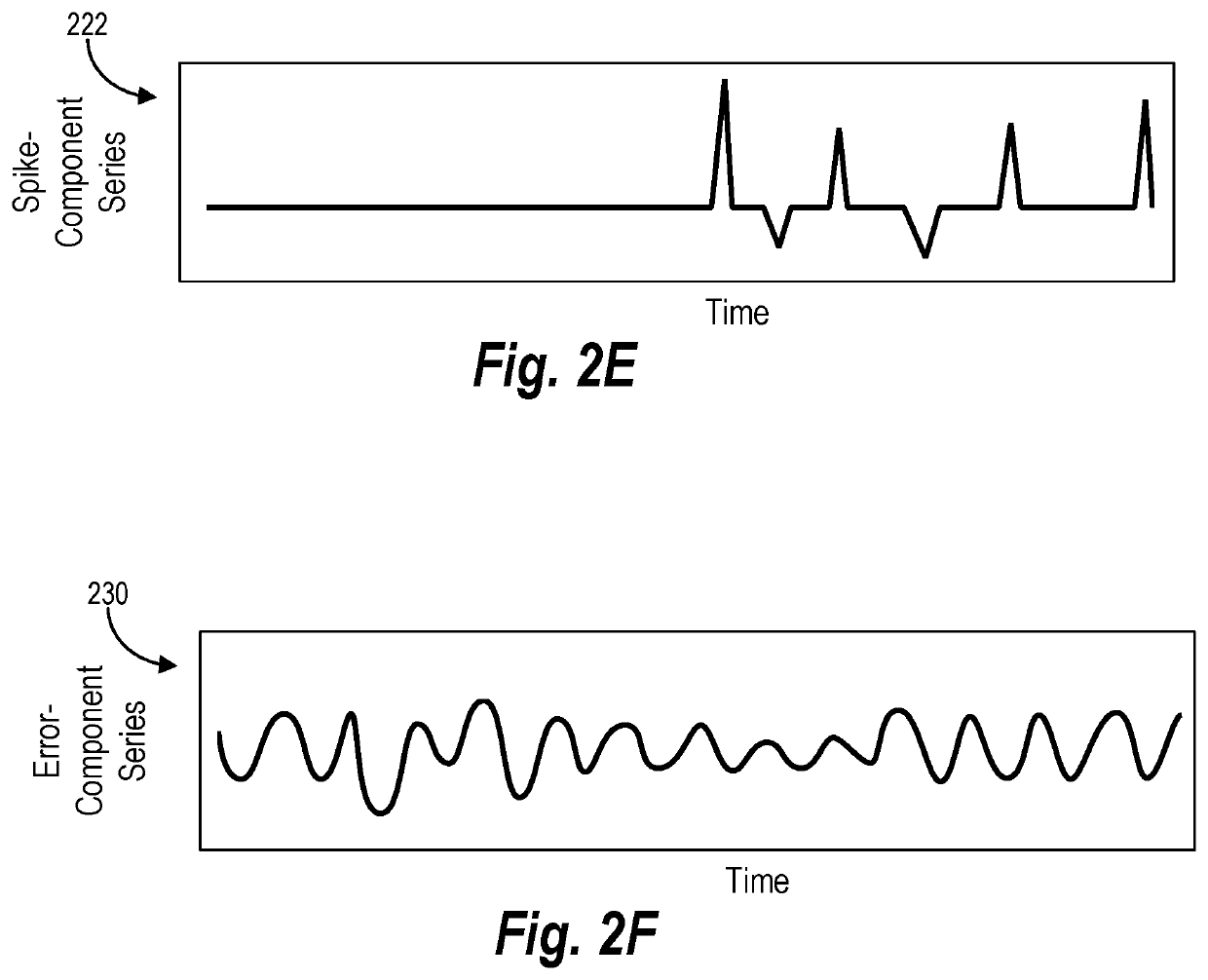Robust anomaly and change detection utilizing sparse decomposition
- Summary
- Abstract
- Description
- Claims
- Application Information
AI Technical Summary
Benefits of technology
Problems solved by technology
Method used
Image
Examples
Embodiment Construction
[0019]This disclosure describes one or more embodiments of an anomaly detection system that decomposes a metrics time series into latent components and determines one or both of spikes and level changes from the latent components indicating anomalous data values based on significance thresholds. Such latent components may include at least a spike-component series and a level-component series. As part of decomposing a metrics time series, the anomaly detection system can account for a range of value types by (i) intelligently subjecting real values from the metrics time series to a latent-component constraint defining relationships among the metrics time series and latent components and (ii) intelligently excluding non-real values from the latent-component constraint.
[0020]The anomaly detection system can further jointly determine whether one or both of a subseries of a spike-component series and a level change from a level-component series satisfy significance thresholds as a basis ...
PUM
 Login to View More
Login to View More Abstract
Description
Claims
Application Information
 Login to View More
Login to View More - R&D
- Intellectual Property
- Life Sciences
- Materials
- Tech Scout
- Unparalleled Data Quality
- Higher Quality Content
- 60% Fewer Hallucinations
Browse by: Latest US Patents, China's latest patents, Technical Efficacy Thesaurus, Application Domain, Technology Topic, Popular Technical Reports.
© 2025 PatSnap. All rights reserved.Legal|Privacy policy|Modern Slavery Act Transparency Statement|Sitemap|About US| Contact US: help@patsnap.com



